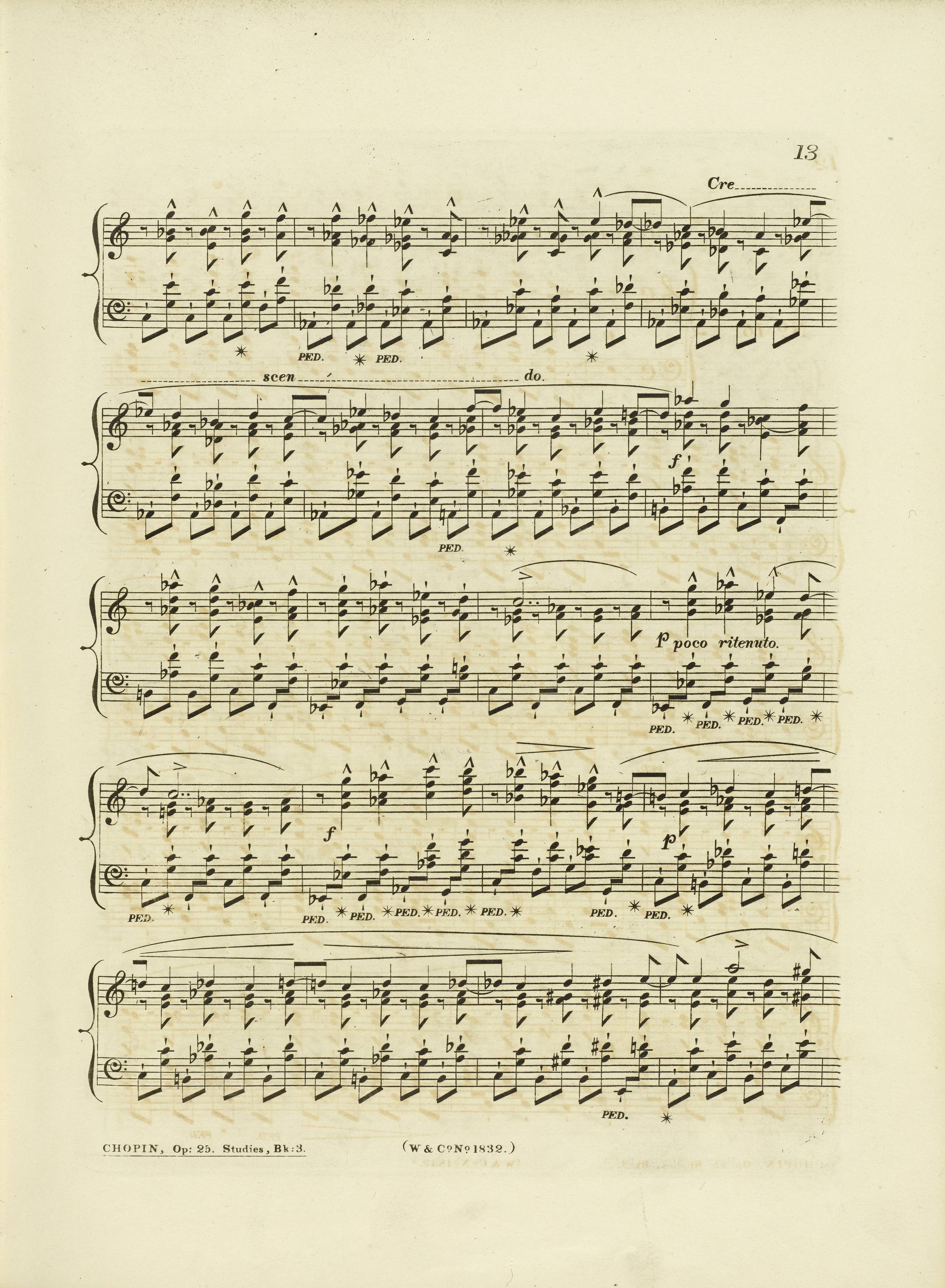



In A the last quaver in the L.H. in bars 27 and 28, as well as the first three even quavers in bar 29 were originally triads. Chopin then deleted the bottom or middle notes, leaving dyads. Particularly at the end of bar 27, the bottom (f) note was deleted out of the f-a -c1 chord, while at the end of bar 28 – the middle one (a
-c1 chord, while at the end of bar 28 – the middle one (a ). FC includes the already finished versions, with one exception – at the end of bar 27 one can see the original f-a
). FC includes the already finished versions, with one exception – at the end of bar 27 one can see the original f-a -c1 triad with an erased a
-c1 triad with an erased a note, hence other than the one deleted in A (the f-c1 fifth, being a result of this correction, is also in EE). A few questions arise:
note, hence other than the one deleted in A (the f-c1 fifth, being a result of this correction, is also in EE). A few questions arise:
-
Which version was written in FC before the correction? It is meaningful for a possible determination of the order of corrections in A and FC:
— if the copyist rewrote the original version of A (triad), Chopin correction of A in this place was introduced already after the copy had been prepared and could have been introduced later than the correction in FC and base text to EE;
— if it was already the correct version (third) that was rewritten, the correction of FC is certainly later.
The second scenario seems to be more likely – certain minor handwriting characteristics (e.g., the manner of writing a stem) suggest a later addition of the note head of f, moreover, such an order does not require dividing the corrections in bars 27-29 in A in two stages. - Who performed the correction in FC? It could have been the copyist, proofing his work, or Chopin, controlling various aspects of the Etude's notation. The copyist's self-correction would be unfounded, hence erroneous, which leads to the next question.
-
Which of these excluding themselves corrections are reliable and to which extent? The correction in A, if performed together with the others, seems to be indisputable – while polishing the sound details of the entire group of chords, Chopin almost certainly had a clear image of the music's course and controlled all aspects of the polished sound. The probability of a mistake increases if the correction in bar 27 was performed separately, out of the context to a certain extent. This possibility, among others due to the reasons discussed in point 1, is, however, much less likely.
In turn, it is the correction in FC that is subject to the risk of mistake, resulting from the random control, even if it was performed by Chopin. However, one can point to a factor reducing this risk – it is EE, including the version compatible with the correction in FC.
To sum up, we consider both versions to be most probably authentic, and, as a result, practically equal. The version of FC (→GE) and EE is probably later, yet the circumstances of introducing both corrections make us consider the version of A (→FE) as the main one.
In the end, one has to discuss the stylistic issue – in the version of A Chopin resigns from the accurate repetition of the interval structure of the bar in favour of an independent progression of the bottom voice of the struck chords. There is a clear analogy to the Ballade in A major, Op. 47, bars 73-76, where, in a similar texture and key, Chopin repeats a four-chord section (bars 73-74, repeated as bars 75-76), differentiating the bottom note of the last struck chord of the section – a
major, Op. 47, bars 73-76, where, in a similar texture and key, Chopin repeats a four-chord section (bars 73-74, repeated as bars 75-76), differentiating the bottom note of the last struck chord of the section – a in bar 74, f in bar 76 – probably due to the different continuation.
in bar 74, f in bar 76 – probably due to the different continuation.
Compare the passage in the sources »
category imprint: Differences between sources; Corrections & alterations
issues: Deletions in A, Accompaniment changes
notation: Pitch



